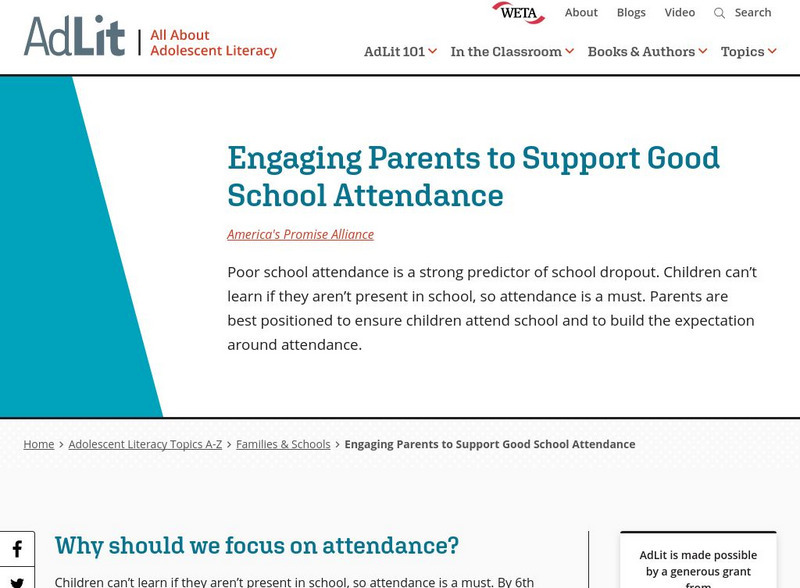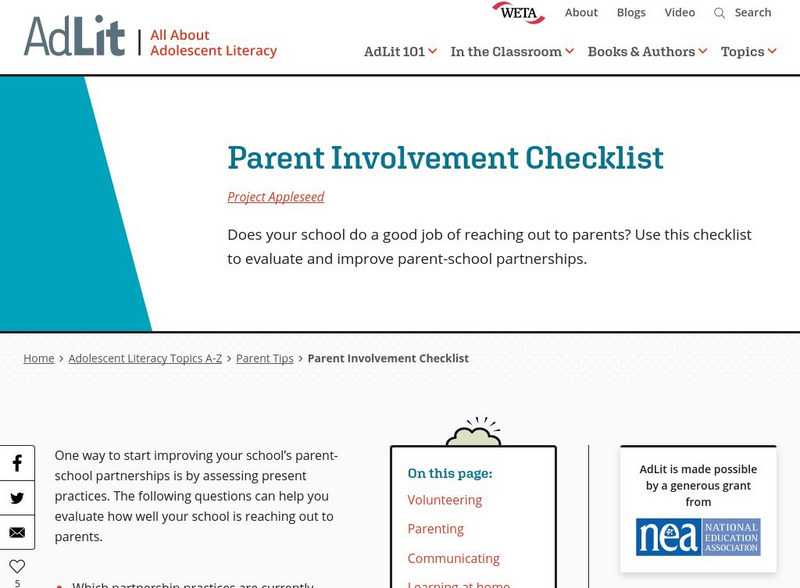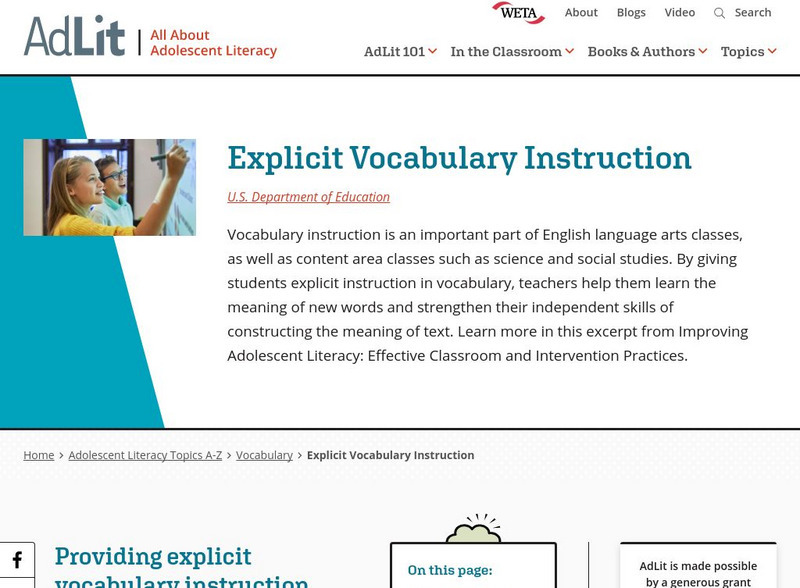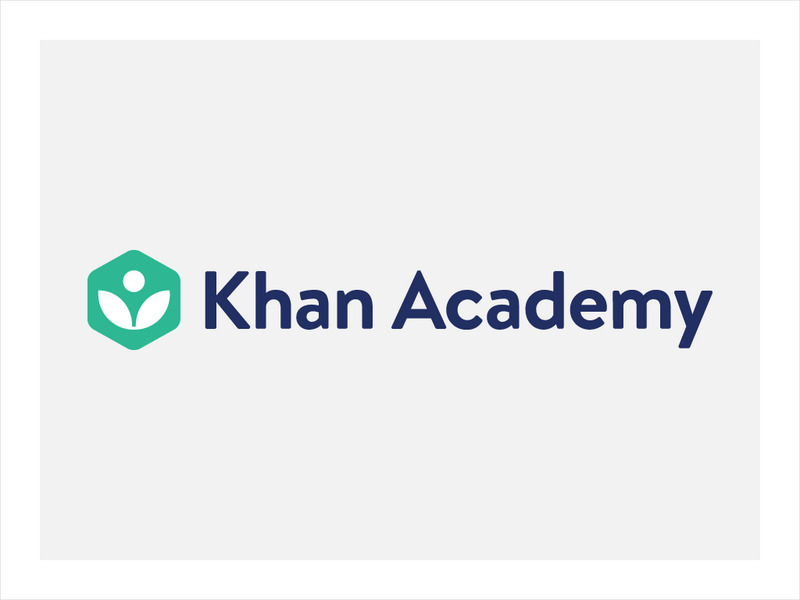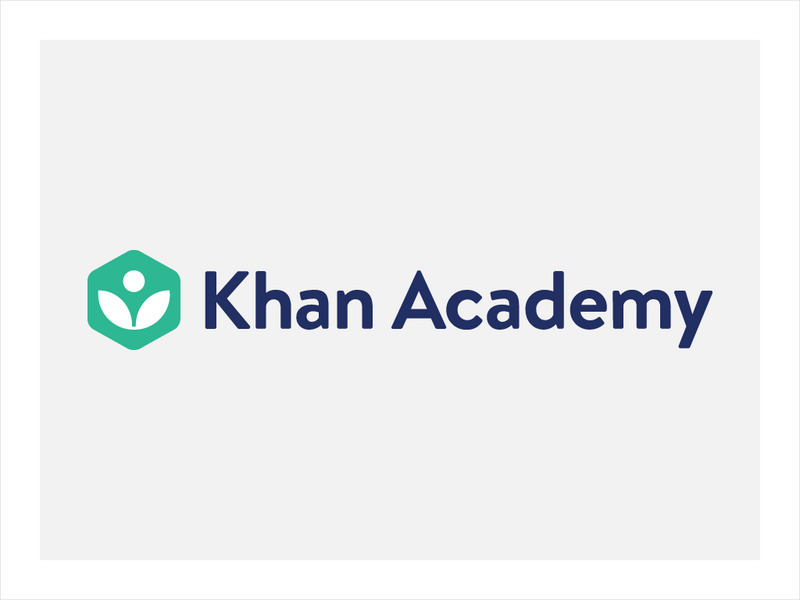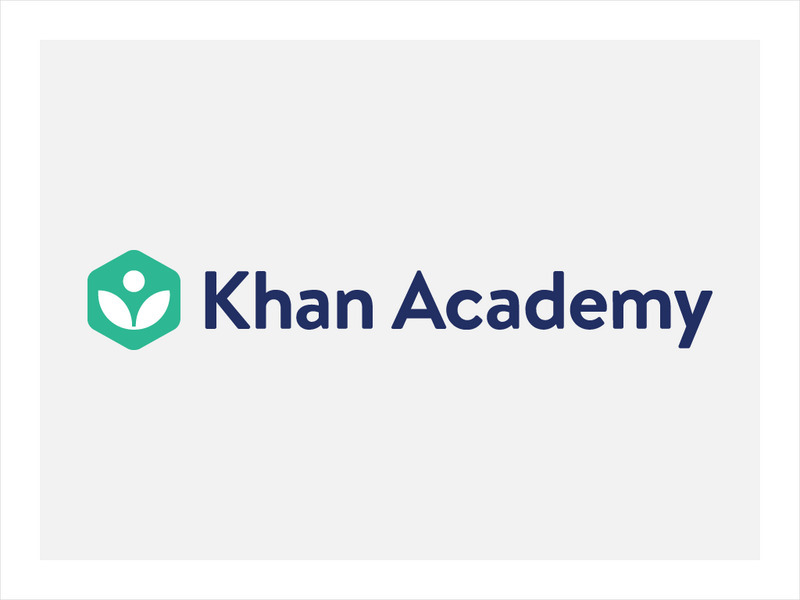AdLit
Ad lit.org: La Diferencia Entre El Ingles Social Y El Academico
El ingles social es el idioma de la comunicacion cotidiana en forma oral y escrita. Este articulo tiene algunas ejemplos.
AdLit
Ad lit.org: Engaging Parents to Support Good School Attendance
Poor school attendance is a strong predictor of school dropout. Children can't learn if they aren't present in school, so attendance is a must. Parents are best positioned to ensure children attend school and to build the expectation...
AdLit
Ad lit.org: Parent Involvement Checklist
Does your school do a good job of reaching out to parents? Use this checklist to evaluate and improve parent-school partnerships.
AdLit
Ad lit.org: October Is Learning Disabilities Month
October was designated LD Month in 1985 through a proclamation by President Ronald Reagan. Each year the celebration is used to educate the public about learning disabilities.
AdLit
Ad lit.org: 5 Homework Strategies for Teaching Students With Learning Disabilities
Many students with learning or reading disabilities find homework challenging. Here are five research-based strategies that teachers can use to help students.
AdLit
Ad lit.org: Hooking Struggling Readers: Using Books They Can and Want to Read
One of the keys to helping struggling readers is to provide them with books that they can and want to read. Fiction for struggling readers must have realistic characters, readable and convincing text, and a sense of the readers'...
AdLit
Ad lit.org: Making Writing Instruction a Priority in Middle and High Schools
Sometimes writing is seen as the flip side of reading, and it is assumed that students who are proficient readers will naturally be proficient writers. While reading and writing are complementary skills, students do not become skilled...
AdLit
Ad lit.org: Developing a Positive School Climate
What is meant by "school climate", and how can you assess the climate at your school? Read on for helpful definitions, assessment ideas, tools, and resources.
AdLit
Ad lit.org: Five Phases of Professional Development
Too often, teachers say that the professional development they receive provides limited application to their everyday world of teaching and learning. Here The North Central Regional Educational Laboratory shares a five-phase framework...
AdLit
Ad lit.org: Making College and Career Readiness the Mission for High Schools
To close the gap between what is expected of a high school graduate and what the world beyond high school demands, state leaders will need to develop coherent policies that equate earning a high school diploma with being prepared for the...
AdLit
Ad lit.org: Helping Equip Teachers to Answer Questions on College Knowledge
In a Stanford University study, a majority of high school students reported speaking with a teacher at least once about college admissions requirements, but teachers reported receiving very little information to answer their students'...
AdLit
Ad lit.org: Explicit Vocabulary Instruction
Vocabulary instruction is an important part of reading and language arts classes, as well as content-area classes such as science and social studies. By giving students explicit instruction in vocabulary, teachers help them learn the...
AdLit
Ad lit.org: Developing Academic Language: Got Words?
Concerns about how to build academic vocabulary and weave its instruction into curricula are common among classroom teachers. This article reviews the research and offers some practical suggestions for teachers.
AdLit
Ad lit.org: Giving Feedback on Student Writing
Learn how to conduct effective peer and teacher writing conferences to improve student writing.
AdLit
Ad lit.org: Content Area Literacy: Literature
Reading complex literary texts offers unique opportunities for students to wrestle with some of the core ethical dilemmas that we face as human beings. The growth of ethical reasoning is one of the most compelling reasons for schools to...
AdLit
Ad lit.org: Knowledge in the Classroom
Learning happens when we connect new information to what we already know. When children have limited knowledge about the world, they have a smaller capacity to learn more about it. Here are four ways teachers can build content knowledge...
AdLit
Ad lit.org: Use and Teach Content Vocabulary Daily
Copying definitions from the dictionary and memorizing words for tests is not sufficient work for students to master and retain new vocabulary. This article helps teachers choose which words are most important to teach and suggests...
AdLit
Ad lit.org: Direct, Explicit Comprehension Strategy Instruction
Comprehension strategies are routines and procedures that readers use to help them make sense of texts. Struggling adolescent readers need direct, explicit instruction in comprehension strategies to improve their reading comprehension.
Khan Academy
Khan Academy: Shifts in Aggregate Demand
Aggregate demand is made up of four components: consumption spending, investment spending, government spending, and spending on exports minus imports. Increasing or decreasing any of these components create shifts the AD curve.
Khan Academy
Khan Academy: The Building Blocks of Keynesian Analysis
Keynesian economics focuses on explaining why recessions and depressions occur and offering a policy prescription for minimizing their effects. The Keynesian view of recession is based on two key building blocks: recessions occur when...
Khan Academy
Khan Academy: Interpreting the Aggregate Demand/aggregate Supply Model
In order for a macroeconomic model to be useful, it needs to show what determines total supply or total demand for the economy and how total demand and total supply interact at the macroeconomic level. This model is called the aggregate...
Khan Academy
Khan Academy: An Introduction to the Tang Dynasty (618 906)
Scholars often refer to the Tang (618-906) and Song (960-1279) dynasties as the "medieval" period of China. The civilizations of the Tang (618-906) and Song (960-1279) dynasties of China were among the most advanced civilizations in the...
Khan Academy
Khan Academy: Introduction to the Han Dynasty
The Han Dynasty is one of the great dynasties in Chinese history, encompassing nearly four hundred years of expansion and consolidation which coincided with the period of the Roman republic and empire in the West. The period is usually...
Khan Academy
Khan Academy: Archaeology and the Study of Ancient China
Archaeology is the study of the material remains of humanity's past. Excavated materials, along with other historical objects and text records, form the primary source material on Ancient China. All the major dynasties, beginning with...

